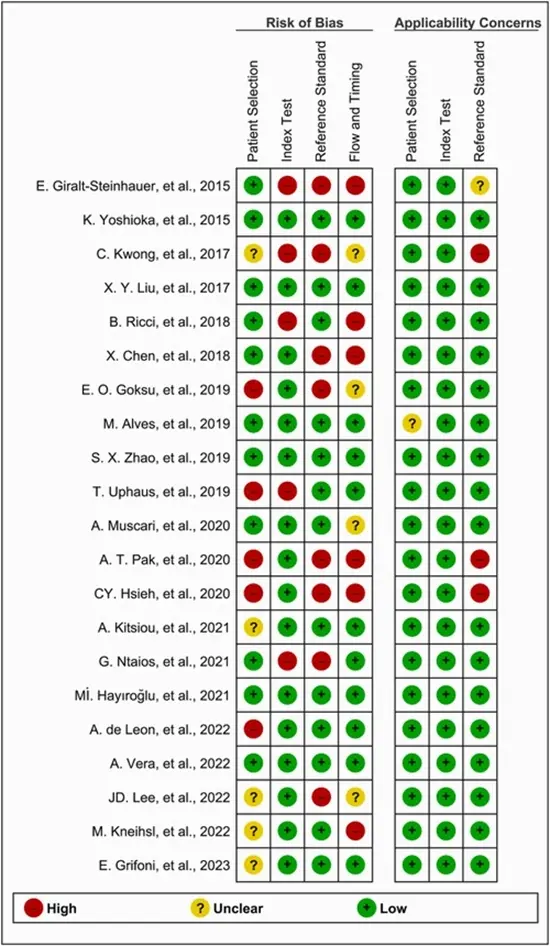Risk scores for prediction of paroxysmal atrial fibrillation after acute ischemic stroke or transient ischemic attack: A systematic review and meta-analysis

Introduction: Detection of paroxysmal atrial fibrillation (PAF) is crucial for secondary prevention in patients with recent strokes of unknown etiology. This systematic review and meta-analysis assess the predictive power of available risk scores for detecting new PAF after acute ischemic stroke (AIS).
Methods: PubMed, Embase, Scopus, and Web of Science databases were searched until September 2023 to identify relevant studies. A bivariate random effects meta-analysis model pooled data on sensitivity, specificity, and area under the curve (AUC) for each score. The QUADAS-2 tool was used for the quality assessment.
Results: Eventually, 21 studies with 18 original risk scores were identified. Age, left atrial enlargement, and NIHSS score were the most common predictive factors, respectively. Seven risk scores were meta-analyzed, with iPAB showing the highest pooled sensitivity and AUC (sensitivity: 89.4%, specificity: 74.2%, AUC: 0.83), and HAVOC having the highest pooled specificity (sensitivity: 46.3%, specificity: 82.0%, AUC: 0.82). Altogether, seven risk scores displayed good discriminatory power (AUC ≥0.80) with four of them (HAVOC, iPAB, Fujii, and MVP scores) being externally validated.
Conclusion: Available risk scores demonstrate moderate to good predictive accuracy and can help identify patients who would benefit from extended cardiac monitoring after AIS. External validation is essential before widespread clinical adoption.
Keywords: Acute ischemic stroke; Cryptogenic stroke; Paroxysmal atrial fibrillation; Risk score; Risk stratification.






comment